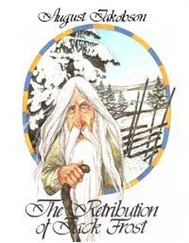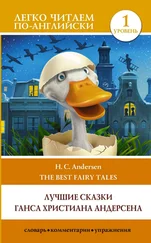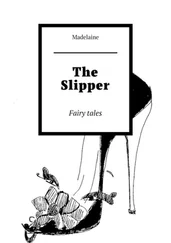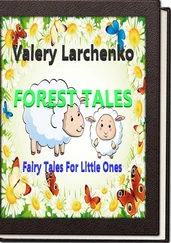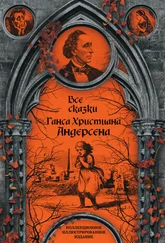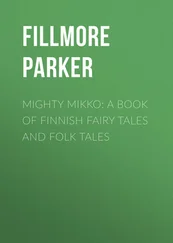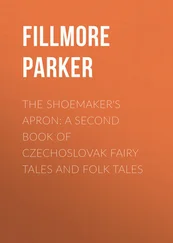Ганс Андерсен - Fairy Tales
Здесь есть возможность читать онлайн «Ганс Андерсен - Fairy Tales» весь текст электронной книги совершенно бесплатно (целиком полную версию без сокращений). В некоторых случаях можно слушать аудио, скачать через торрент в формате fb2 и присутствует краткое содержание. Жанр: Старинная литература, на английском языке. Описание произведения, (предисловие) а так же отзывы посетителей доступны на портале библиотеки ЛибКат.
- Название:Fairy Tales
- Автор:
- Жанр:
- Год:неизвестен
- ISBN:нет данных
- Рейтинг книги:4 / 5. Голосов: 1
-
Избранное:Добавить в избранное
- Отзывы:
-
Ваша оценка:
- 80
- 1
- 2
- 3
- 4
- 5
Fairy Tales: краткое содержание, описание и аннотация
Предлагаем к чтению аннотацию, описание, краткое содержание или предисловие (зависит от того, что написал сам автор книги «Fairy Tales»). Если вы не нашли необходимую информацию о книге — напишите в комментариях, мы постараемся отыскать её.
Fairy Tales — читать онлайн бесплатно полную книгу (весь текст) целиком
Ниже представлен текст книги, разбитый по страницам. Система сохранения места последней прочитанной страницы, позволяет с удобством читать онлайн бесплатно книгу «Fairy Tales», без необходимости каждый раз заново искать на чём Вы остановились. Поставьте закладку, и сможете в любой момент перейти на страницу, на которой закончили чтение.
Интервал:
Закладка:
THE WILL-O’-THE-WISPS ARE IN TOWN (LYGTEMAENDENE EER I BYEN, SAGDE MOSEKONEN, 1865)
For this story, written a year after Denmark had fought a bitter war with Prussia and lost the region of Schleswig-Holstein, Andersen had to overcome a writer’s block. The tale reflects his dark mood during this period in his life. The search for the fairy tale parallels his own search for a means to overcome his depression. Ultimately, the story ends on an optimistic note, evidence of the power of the fairy tale to provide hope.
THE PIXIE AND THE GARDENER’S WIFE (NISSEN OG MADAMEN, 1868)
This tale, first published in Folkekalender forDanmark, was based on a Danish folk tale about a pixie that teases a chained dog. Andersen transformed this tale into a more significant commentary on the pretentiousness of minor writers, flattery, and the fickleness of audiences.
THE PUPPETEER (MARIONETSPILLEREN, 1851)
Andersen published a version of this tale in his travel book In Sweden (1851). The tale reflects his concerns about controlling characters in his plays or stories. What happens to the theater manager when his puppets come to life is a dilemma for the writer or author, who must know how to handle his characters. E. T. A. Hoffmann’s tale “Seltsame Leiden eines Theater-Direktors” (“Strange Sufferings of a Theater Director,” 1819), which deals with the difficulties of a director, may have influenced Andersen in his writing of this tale.
“SOMETHING” (NOGET, 1858)
Andersen stated that this legendary tale was based on a real incident in Schleswig, where an old woman burned her house to warn people out on nearby ice that a spring flood was coming. He also employed motifs from the folk tradition in which five brothers are sent out into the world to acquire skills that bring them fortune. A major element of this tale is Andersen’s parody of critics. In particular, Andersen drew a caricature of Danish critic Christian Molbech, who often attacked Andersen’s plays and writings. Molbech died in 1857.
WHAT ONE CAN THINK UP (HVAD MAN KAN HITTE PAA, 1869)
Originally published in English as “What One Can Invent” in The Riverside Magazine for Young People, the tale was published several months later in the book Tre Nye Eventyr og Historier (Three New Fairy Tales and Stories). Andersen detested any sort of criticism of his works, and in this tale he gets his revenge by depicting critics as writers who lack imagination. At the same time, he also voiced his optimism about the progress of technology.
THE MOST INCREDIBLE THING (DET UTROLIGSTE, 1870)
This story first appeared in English in The Riverside Magazine for Young People under the title “The Most Extraordinary Thing” and was published in Danish the same year in Nyt Dansk Maanedsskrift ( New Danish Monthly Magazine). Although Andersen was not political, he was disturbed by the looming threat of the Franco-Prussian War (1870-1871), just as he had been upset by earlier wars between Denmark and Prussia. Since he admired Prussia but regarded himself as a loyal Danish patriot, despite his feelings of alienation it was difficult for him to accept the Prussian aggression. Although the tale was written before the eruption of the war, there are clear references to the dispute. But the tale is more than a political commentary. It is a manifesto about the power of art and poetry, which will always triumph over brutality and violence. For Andersen, especially in his old age, it was important to proclaim the integrity and immortality of art.
AUNTIE TOOTHACHE (TANTE TANDPINE, 1872)
Though Andersen had begun this story in June 1870, he did not finish it until July 1872, and it is generally considered to be among the last tales he wrote. It is thus perhaps no surprise that it is a cynical commentary on the role of writing. Andersen wondered toward the end of his life whether all the pains he took to write would be worth the effort, and he worried about his stature as a writer. It seemed to him that his works might end up in a waste barrel. Some scholars consider the character Aunt Mille to be based on Andersen’s friend Henriette Wulff, who greatly admired his works.
THE CRIPPLE (KRØBLINGEN, 1872)
Written between July 12 and July 18, this tale, along with “The Story Old Johanna Told,” was dedicated to the Melchior family in gratitude for the care and hospitality they had given the author. He was inspired to write this tale, which reflects Andersen’s belief in the healing power of fairy tales, after thinking about the old tale “The Woodchopper and His Wife.” When he sent it to Horace Scudder, the American editor of his works, in New York, it had the title “The Fairy Tale Book.” The plot is based on an anecdote that J. T. Kragh told Andersen: A poor couple had a mentally handicapped son who told them a story about a king who could regain his health only if he found the shirt of the happiest man on earth.
FOLK TALES
THE TINDERBOX (FYRTØJET, 1835)
“The Tinderbox” has deep roots in the Oriental and European oral traditions. There are clear similarities to the medieval Arabic tale “Aladdin and the Magic Lamp,” which was part of the Antoine Galland’s French collection of The Thousand and One Nights, translated into Danish in 1757 and 1758. Andersen is said to have heard this story as a child. In addition, the Brothers Grimm published “The Blue Light” (1812) in the first edition of their Children’s and Household Tales, and Andersen may have been familiar with this tale, which is very close to Andersen’s narrative. Finally, Bengt Holbek, the great Danish scholar, points out that Andersen may have known the Danish folk tale “The Spirit of the Candle,” of which there are many variants, as well as Adam Oehlenschläger’s play Aladdin (1805). The tale may have had a personal significance for Andersen because his father had served as a common soldier during the Napoleonic Wars and returned to Odense a broken man in 1814; he died two years later.
LITTLE CLAUS AND BIG CLAUS (LILLE CLAUS OG STORE CLAUS, 1835)
This type of tale, generally referred to in German as a Schwank (a farcical tale or comic anecdote), was widespread throughout the medieval period. A Latin poem, “Versus de Unibove,” which was published in the Netherlands in the eleventh century, describes how a farmer, mocked by his neighbors, makes fools out of them, a plot that became common in Italian and French stories of the Renaissance. Elements of the tale can be found in the fourteenth-century Latin collection of tales and anecdotes entitled Gesta Romanorum (Deeds of the Romans) as well as in Giovanni Boccaccio’s the Decameron (1348-1353) and Poggio Bracciolini’s Liber facetiarum (The Fracetiae, 1438-1452) , a collection of jests and anecdotes. The theme of the clever swindler who does not respect the norms of society is related to many other ancient tales that depict a small clever hero who uses his wits to outsmart a giant, ogre, or monster, or a group of threatening people. These tales, which tend to be realistic portrayals of peasant life, convey a social critique of the injustices suffered by poor peasants. In these farcical tales, the peasants are portrayed for the most part carrying out menial tasks, such as chopping or gathering wood, spinning, weaving, or tending herds of sheep, goats, or geese. The exaggeration of their circumstances serves to highlight their desperate plight; the ending is often a wish-fulfillment in which the clever peasant has plenty of money and plenty to eat. In the early 1550s Giovan Francesco Straparola published a hilarious Italian version “The Priest Scarpacifico,” and in 1812 the Brothers Grimm included in their Children’s and Household Tales the story “The Little Farmer,” which is similar to Andersen’s tale. There were also earlier Danish versions of the tale.
Читать дальшеИнтервал:
Закладка:
Похожие книги на «Fairy Tales»
Представляем Вашему вниманию похожие книги на «Fairy Tales» списком для выбора. Мы отобрали схожую по названию и смыслу литературу в надежде предоставить читателям больше вариантов отыскать новые, интересные, ещё непрочитанные произведения.
Обсуждение, отзывы о книге «Fairy Tales» и просто собственные мнения читателей. Оставьте ваши комментарии, напишите, что Вы думаете о произведении, его смысле или главных героях. Укажите что конкретно понравилось, а что нет, и почему Вы так считаете.

![Ганс Андерсен - Ганс Чурбан[другой перевод]](/books/95480/gans-andersen-gans-churban-drugoj-perevod-thumb.webp)

